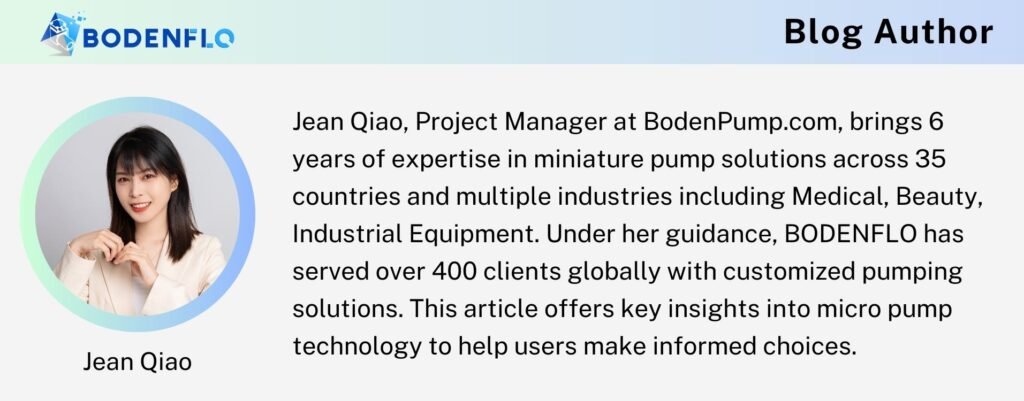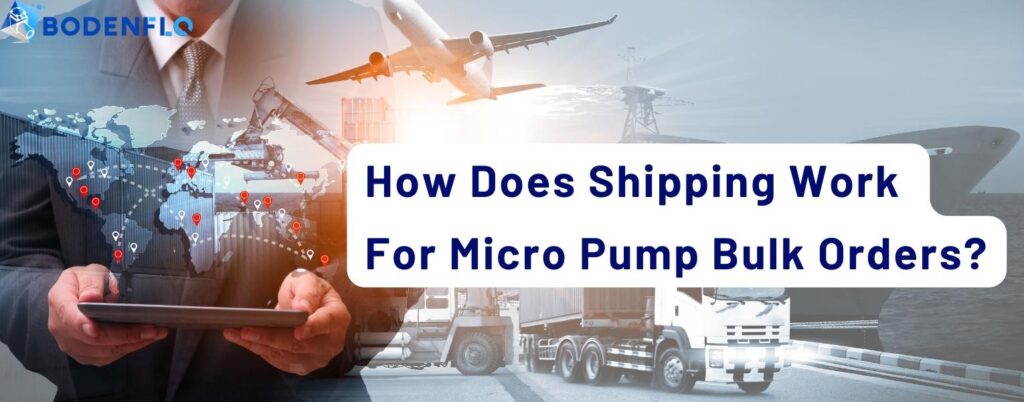
Navigating the logistics of bulk orders for micro pumps can be a complex affair that leaves many buyers feeling overwhelmed and anxious. The process includes multiple steps from choosing the right shipping method to dealing with customs, not to mention the quality concerns during transit. However, with a clear understanding of how shipping works for micro pump bulk orders, you can alleviate these pain points and ensure a seamless delivery process.
When placing bulk orders for micro pumps, it's essential to work closely with your supplier to determine the best shipping method—be it air, sea, or land. Always factor in delivery times, costs, and import regulations of the destination country. A reputable supplier will handle most of the logistics and provide tracking services, giving you peace of mind.
Stay tuned as we delve deeper into each shipping method, breaking down their pros and cons, to guide you in making the most cost-effective and reliable shipping choices for your business.
What Are the Options for Bulk Shipping?
When it comes to bulk shipping of micro pumps, various options can cater to your business needs. Each has its advantages, disadvantages, and best use-cases.
Sea Freight
Firstly, let's consider sea freight. It's the go-to option for large shipments due to its cost-effectiveness. However, it's also the slowest method.

According to freight industry analysis, sea shipping can save up to 70% of costs compared to air freight for bulk orders. The downside is the time factor; it may take weeks or even months for goods to arrive.
Air Freight
Secondly, there's air freight. It's considerably faster but also more expensive. If speed is a critical factor for your business, this is your best bet.
Data from aviation logistics studies suggest that air freight can deliver your goods in a matter of days, but it can cost three to six times more than sea freight.
Rail Freight
Rail freight offers a balanced approach, especially useful if you're exporting to regions connected by land.
In our internal surveys, clients have found rail freight to be a more flexible option than sea but more economical than air freight.
Logistics Partners
Lastly, it's crucial to choose the right logistics partner. The choice can drastically affect the efficiency and cost of shipping.
Your logistics partner should offer tracking, ensure safe delivery, and must be compliant with international shipping regulations. Partnering with a reputable logistics company can make or break your shipping success.
What's Included in the Freight Cost?
When calculating the freight cost for your bulk order of micro pumps, it's important to remember that the figure encompasses more than just the shipping charges. Not accounting for the additional costs can result in unexpected overhead, disrupting your budget and workflow.
Shipping Fees
Firstly, the most obvious part of your freight cost is the shipping fee. This charge is dependent on the shipping method you choose—be it air, sea, or rail freight.

Customs Clearance
Another aspect to consider is customs clearance fees. These are administrative costs for your goods to pass through the custom stations, and they can vary depending on the destination country.
Duties and Taxes
Import Duties and taxes are government-imposed charges on your goods. These can be a significant part of your freight cost and are determined by the Harmonized System Code (HS Code) of your product.
Local Delivery and Unloading
Once your goods arrive at the port or airport, local delivery and unloading costs can apply. The final leg of the journey to your warehouse also incurs costs, which can vary based on distance and local rates.
Additional Fees
Some unexpected fees could include demurrage charges for delayed unloading, handling fees, and sometimes even penalties for incorrect documentation.
To accurately forecast your freight costs, it is advisable to consult with your supplier and a logistics expert. Transparency is key; make sure all potential charges are discussed and documented. Proper planning and clear communication can go a long way in avoiding unwelcome financial surprises.
How to Calculate Shipping Time?
Accurate estimation of shipping time is crucial for planning and inventory management, especially in the business-to-business sector where timelines are often tight. The shipping time for your micro pump bulk orders can vary significantly depending on several key factors.
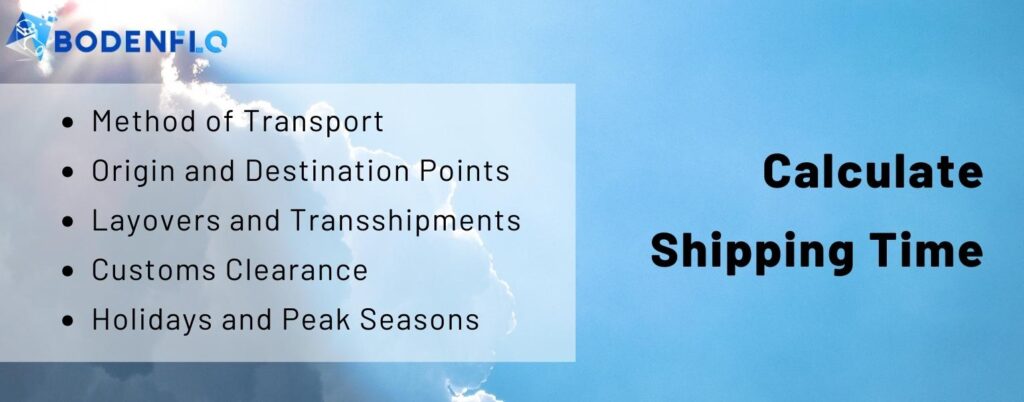
Method of Transport
The first variable is the method of shipping: air, sea, or land. For air freight, the shipping is usually faster, taking up to a week, but it's also more expensive.
Origin and Destination Points
For sea freight, the duration can range from 15 to 40 days, depending on the distance between the origin and destination points. This doesn't account for potential delays due to weather conditions or custom procedures.
Layovers and Transshipments
Also, bear in mind that direct routes are faster but may be more expensive. Layovers and transshipments add to the total shipping time.
Customs Clearance
Customs clearance is another factor that can affect shipping time. Even if your goods reach the destination port or airport quickly, they can't proceed until they have cleared customs. This process can take anywhere from a day to several weeks, depending on the country and the nature of the goods.
Holidays and Peak Seasons
Don't forget about holidays and peak seasons, which can slow down both shipping and customs procedures. Always check the public holidays for both the exporting and importing countries, and plan accordingly.
Given these variables, it's essential to consult with your shipping and logistics providers for a more precise estimate. Detailed planning and a clear understanding of the shipping process can greatly reduce the risk of delays, helping you manage your business operations more effectively.
How Are Products Packed?
When it comes to the safe transportation of micro pumps, proper packaging is a critical element that shouldn't be overlooked. For bulk orders, particularly those intended for international shipping, the risk of damage must be minimized to ensure product quality upon arrival.
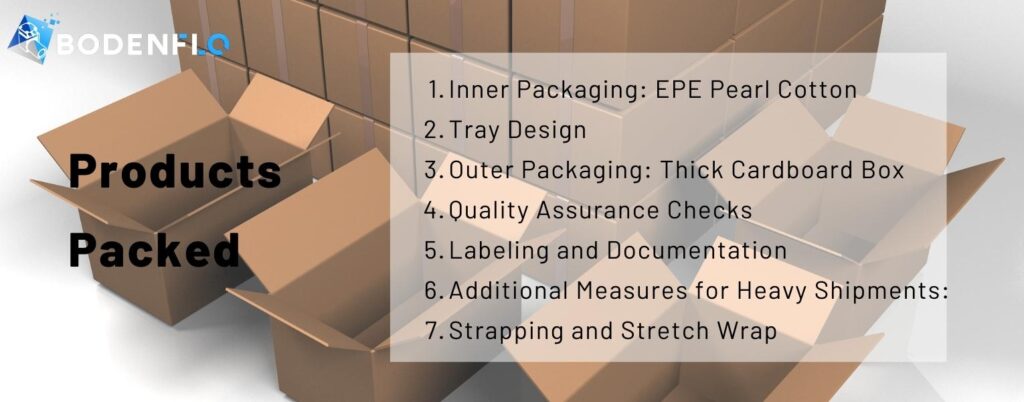
Inner Packaging: EPE Pearl Cotton
The initial layer of packaging commonly involves EPE (Expanded Polyethylene) pearl cotton. This material is excellent for absorbing shocks and impacts during transit, safeguarding the delicate internal components of the micro pumps.
Tray Design
In most cases, the EPE pearl cotton is molded into an inner tray. The tray design is tailored to fit the dimensions of the micro pump, keeping it firmly in place and providing additional layers of protection. This minimizes any movement within the package that could otherwise result in abrasion or other forms of damage.
Outer Packaging: Thick Cardboard Box
Once the micro pumps are securely fitted into their EPE pearl cotton trays, they are then placed in a thick cardboard box. This outer layer is designed to be sturdy enough to withstand the rigors of long-haul shipping, whether by air or sea.
Quality Assurance Checks
Before the packages are sealed, a final quality assurance check is usually conducted. This step ensures that the micro pumps are packed according to the specifications and that the packaging materials used meet the necessary safety standards for transportation.
Labeling and Documentation
Last but not least, appropriate labels are attached, and any necessary shipping or customs documents are included. This facilitates a smoother shipping process and helps in quicker customs clearance.
Additional Measures for Heavy Shipments: Strapping and Stretch Wrap
If the shipment is particularly heavy or consists of multiple stacked boxes, additional security measures are taken to ensure the integrity of the products throughout their transit. Strapping is applied to tightly hold the boxes together, providing an extra layer of security against falls or shifting during transportation.
Furthermore, stretch wrap may also be used to envelop the entire pallet or set of boxes. This plastic film holds everything tightly together and adds an additional layer of protection against external elements like moisture, dust, and other contaminants.
These added measures are particularly important when shipping to long distances or overseas, as they further ensure that the products will reach their destination in pristine condition. This attention to detail in packaging highlights a commitment to delivering a high-quality product to the customer.
In summary, the packaging process for heavy micro pump shipments goes beyond merely placing the product in a box. It is a comprehensive, multi-step procedure designed to protect the investment you've made in high-quality equipment, reinforcing the credibility of your brand in the eyes of your customers.
What Documents Are Needed?
Typically, you'll need the Bill of Lading, Packing List, and Commercial Invoice. Sometimes, you may need additional documents for customs clearance in your country.
Commercial Invoice: This is perhaps the most crucial document, detailing the transaction between the buyer and the seller. It includes essential information such as the description of the goods, unit prices, and terms of sale.
Packing List: This document describes the physical aspects of the shipment, including dimensions, weight, and the type of packaging used, like EPE pearl cotton inner tray and thick cardboard box for micro pumps.
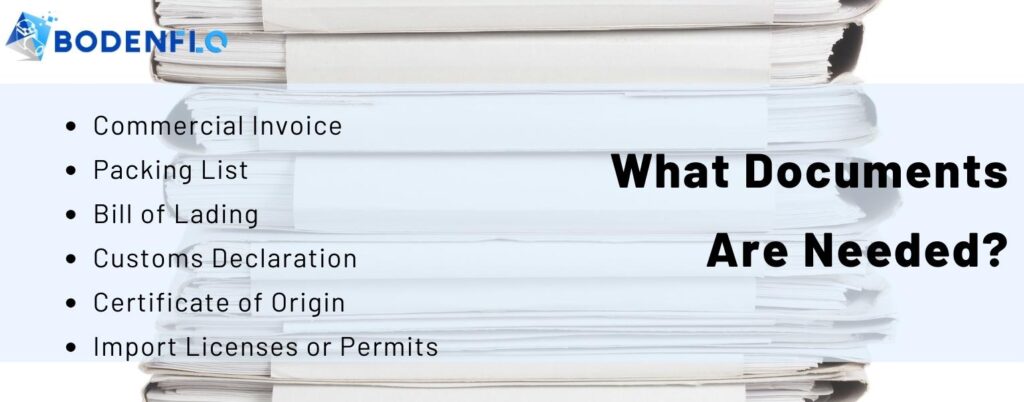
Bill of Lading (BOL): For sea shipments, the Bill of Lading serves as a contract between the shipper and the carrier. For air freight, this is replaced by the Airway Bill.
Customs Declaration: This form is necessary for the importing country's customs agency and provides detailed information about the nature, quantity, and value of the shipped goods.
Certificate of Origin: This document attests to the country in which the shipped goods were produced, which is vital for compliance with international trade agreements and tariffs.
Import Licenses or Permits: Depending on the jurisdiction, you may need specific licenses or permits to import certain types of micro pumps, especially if they have medical or industrial applications.
By ensuring that all required documents are accurately filled out and present, you can mitigate the risk of shipment delays or complications with customs, thereby guaranteeing a more streamlined shipping and receiving process.
How to Track Your Shipment?
When you're dealing with bulk orders of sensitive equipment like micro pumps, knowing the whereabouts of your shipment at any given time becomes critical for planning and peace of mind.
The first step in tracking your shipment is to obtain the tracking number or the Bill of Lading (BOL) number from your supplier. These unique identifiers enable you to monitor your cargo, whether it's being shipped by sea, air, or land.
Real-time GPS Tracking: Many logistics companies now offer real-time GPS tracking services. You can monitor the location of your shipment on a map and get instant notifications about any changes in status, such as delays or early arrivals.
Use a Freight Tracking Platform: Numerous specialized software platforms allow for centralized tracking of shipments. These platforms often provide comprehensive data, including estimated time of arrival, current location, and any potential issues that may arise during shipping.
Check with the Carrier: Some carriers offer customer service lines specifically for tracking shipments. This can be an alternative to online tracking for those who prefer direct communication.
Customs Status: Keep an eye out for notifications concerning the customs clearance status. Any issues at this stage can result in delays, so being proactive can save valuable time.
While technology has significantly simplified the process of tracking shipments, it's still essential to maintain regular communication with your supplier and the shipping carrier. This ensures that you are immediately alerted to any potential issues and can take action to resolve them, ensuring a smooth delivery process.
BODENFLO Shipping FAQs
Q: What is the cost of shipping 1,000 units of BD-04A via sea freight or Express to Germany?
Answer:
The BD-04A micro air pump has a unit weight of 0.306 kg. For 1,000 pumps, the net weight would be 306 kg, and the gross weight (including packaging) would be 323 kg.
Each carton contains 60 pumps, cushioned by three layers of EPE foam inserts, with each layer holding 20 pumps. The net weight per carton is 18.36 kg, and the gross weight is 19.36 kg. The dimensions of each carton are 54.2 cm x 31.2 cm x 21 cm. To ship 1,000 air pumps, you would require 17 cartons, with the last carton containing 40 pumps, having a net weight of 12.24 kg and a gross weight of 13.24 kg.

Shipping Options:
- Express Shipping: Using FedEx for 323 kg, the estimated shipping cost would be approximately $1,471, with an estimated delivery time of around 8 days.
- Sea Freight: From the port of Shenzhen to the port of Hamburg, the estimated shipping time is approximately one month via COSCO/ONE carriers. The estimated cost is around $90.
Documentation Provided by BODENFLO:
- Bill of Lading
- Commercial Invoice
- Packing List
- Customs Declaration Form
Recommendation:
If time is not a critical factor, sea freight is the most cost-effective shipping option.
For further inquiries or to proceed with a shipping arrangement, please contact our logistics department.
Conclusion
Understanding the shipping process for bulk orders of micro pumps can help in planning and managing costs effectively. Always keep a line of communication open with your supplier for a smooth shipping experience.
For more specific needs and a hassle-free shipping experience, consider BODENFLO. With our specialized services in micro pump technology and global logistics, we ensure that your bulk orders reach you on time, every time.
For a thorough shipping consultation and state-of-the-art micro pumps, get in touch with us at BODENFLO. Your business deserves the best, and that's what we provide.

